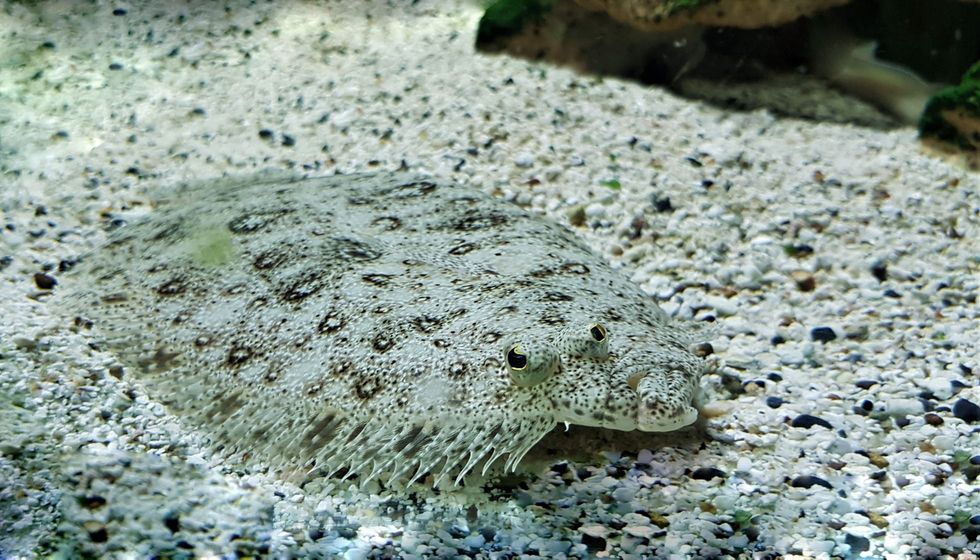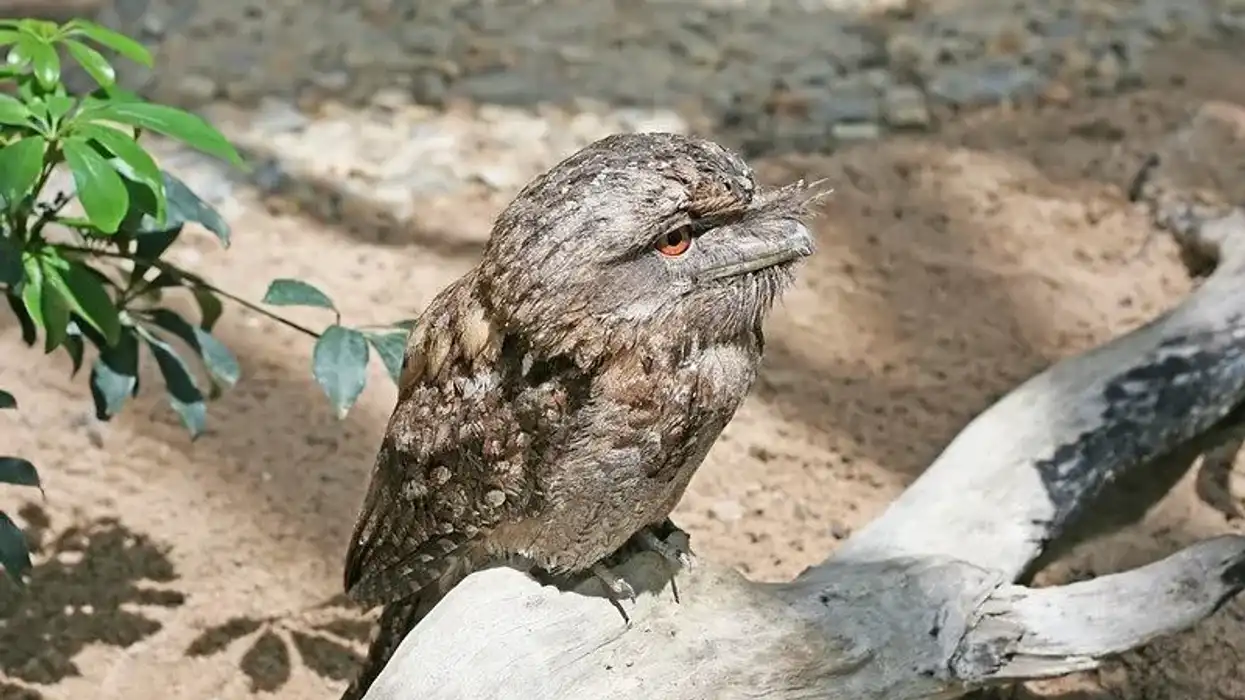Do you like flatfish, like Atlantic halibut? Then here we have all the information on the tonguefish.
Tonguefish is a family of marine animals, specifically flatfish. They are not freshwater fish, so they are mainly found in oceans around the world, mostly in warm waters. About five species among many tonguefish are known to live in freshwater habitats, specifically rivers.
Similar to all other species of flatfish, tonguefish have a flat body. Both of their eyes are observed on the left side of their head.
They lack any pectoral fins and the pelvic fin on the left side of their body. Their dorsal fin is not conspicuous, it's rather conjoined with their anal fins and form long fins going along the sides of their body. Different species of tonguefish belong to different genera.
The tonguefish scientific name also varies and depends on the genus the specific species belong to. The International Union for Conservation of Nature or the IUCN has given various statuses to different species depending on their population.
Read on to know more about the tonguefish and if you like this article, then also check out rockfish and pilchard.
Tonguefish Interesting Facts
What type of animal is a tonguefish?
Tonguefish is a family of marine animals, specifically flatfish.
What class of animal does a tonguefish belong to?
The tonguefish belongs to the class Actinopterygii of marine animals.
How many tonguefish are there in the world?
There are more than 140 species of tonguefish in the Cynoglossidae, tonguefish family. The population of many species among them has not yet been assessed or keeping a track of their population has not been possible within their habitat range. Hence, the population of these families of fish in an exact number is not known.
Where does a tonguefish live?
These fish are found all around the world, mainly around the warm waters of the oceans. These are not freshwater fish, but about five species of the tonguefish family are known to live in rivers.
What is a tonguefish's habitat?
The tonguefish are primarily found in shallow waters or estuaries of tropical and subtropical oceans around the world. They are not freshwater fish.
The fish of the Symphurinae subfamily have been seen up to the depth of about 0.2-1.2 mi (300-1900 m). They are the only family of fish that can be found around the sulfur ponds at the hydrothermal vents of the seafloor.
Who do tonguefish live with?
These fish are known to occur in schools.
How long does a tonguefish live?
The average lifespan of all species of the Cynoglossidae, tonguefish family is not known. However, some species among them have been observed to live for up to 10 years of age.
How do they reproduce?
The breeding season of different species is known to occur at different times, as the breeding season of the black cheek tonguefish occurs around March-October, and for the California tonguefish, it occurs around June-September. Not a lot is known about the reproductive behavior of the tonguefish due to a lack of research.
All the fish migrate to deeper waters when the breeding season arrives. They are thought to be serial spawners.
They probably release many batches of eggs during their entire breeding season. Female flatfishes are known to release numbers of eggs into the water and then the male flatfishes fertilize them by releasing sperm.
What is their conservation status?
The different species of the Cynoglossidae family have different conservation statuses according to the International Union for Conservation of Nature. For example, the tongue sole (Symphurus nigrescens), dark cheek tongue (Symphurus undecimplerus), and more are listed as species of Least Concern.
The McCulloch's tongue sole (Cynoglossus maccullochi), sand tonguefish (Cynoglossus capensis), and more are listed as Data Deficient species. The Canary tongue sole (Cynoglossus canariensis) is the only tonguefish that is listed as a Near Threatened species.
The black cheek tonguefish (Symphurus plagiusa), Bloch's tongue sole (Paraplagusia bleekeri), and more are Not Listed. Most species of the tonguefish family are not facing any great threats within their habitat range.
Tonguefish Fun Facts
What do tonguefish look like?
Similar to the hogchoker and all other flatfish, tonguefish have a flat body. They have both eyes on the left side of their head and an asymmetrical mouth. Their most distinguishable feature is a snout overhanging the mouth.
They also have a hook on the snout which is actually a long hook. They lack any pectoral fins. They also lack a pelvic fin on the left side of their body.
Their caudal fin is pointed and conjoined with the dorsal fin. The caudal and dorsal fins are also conjoined with their anal fins, so they actually have no distinctive tail. Their colors vary according to all the species.
How cute are they?
These fish have a little weird-looking body. However, fish enthusiasts will surely be fascinated by them. Their ability to live among sulfur ponds has been fascinating to scientists as well.
How do they communicate?
Most fish communicate visually, by sound, and by vibration. Their lateral line of the fish helps them feel the vibrations in the water to get an understanding of direction, prey, or predators.
How big is a tonguefish?
The length of the body of tonguefish is about 11.8 in (30 cm) and can reach a length of about 19 in (48 cm). They are about two times shorter than the common sole fish, who is about 28 in (71.12 cm).
How fast can a tonguefish swim?
The exact speed at which the tonguefish swim is not known. However, flatfish in general, are slow-moving fish, like flounder fish swim only at a speed of 0.4-0.5 mph (0.7-0.8 kph).
How much does a tonguefish weigh?
The exact weight of these fish is not known. However, these are small-sized fish, so it can be assumed that they don't weigh a lot. Compared to an Atlantic halibut, which weighs around 400 lb (181.4 kg), they would weigh much less.
What are the male and female names of the species?
The males and the females of the fish have no specific names.
What would you call a baby tonguefish?
A baby tonguefish is called a fry.
What do they eat?
These are omnivorous fish and specifically, search for food at the seafloor. In plant-based food, they have been observed to eat plant debris or waste. In animal-based food, they primarily feed on benthic invertebrates, mainly copepods, shrimps, worms, small-sized crabs, and more.
Are they aggressive?
There have been no records of the tonguefish being aggressive or dangerous towards humans or otherwise. They have the ability to hide in the sand of the seafloor to hide from predators and search for food, like many other species of flatfish. Their colors help them camouflage pretty well.
Would they make a good pet?
These are wild fish that primarily live in oceans. They have not been seen to live in households as pets. They require a specific environment and habitat to live or survive, so it's better to leave them in the wilderness.
Did you know...
Due to the small size of the tonguefish, they don't hold any commercial value, so they are not bred in aquacultural establishments. However, they are caught for feeding purposes, as many people do eat these fish.
Why is it called tonguefish?
It's not known how these fish got their common name 'tonguefish', but the scientific name for the tonguefish family, Cynoglossidae comes from Greek words, 'kyon' and 'glossa'. Here, 'kyon' means 'dog' and 'glossa' means 'tongue' in English.
Is tonguefish good to eat?
Tonguefish are edible and they also taste quite good. They are found in abundance, so they are quite cheap. They can be found finely fleshed, delicate in taste, and easy to eat.
Here at Kidadl, we have carefully created lots of interesting family-friendly animal facts for everyone to discover! For more relatable content, check out these white tuna facts and skatefish facts for kids pages.
You can even occupy yourself at home by coloring in one of our free printable goldfish coloring pages.









